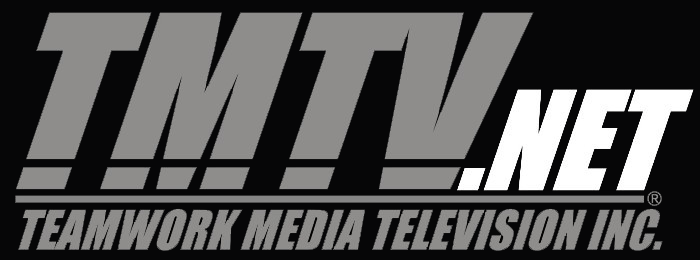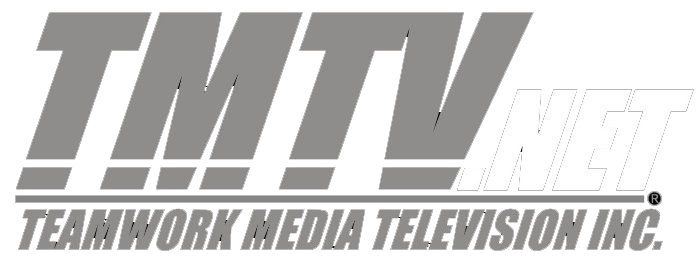RECOVERY & RESCUE OF OLD UNPROCESSED MOTION PICTURE FILM – FOR NORTH AMERICAN CLIENTS ONLY
FILM PROCESSING OF OLD MOTION PICTURE FILM LONG PAST IT’S DEVELOPING EXPIRY DATE
REGULAR 8/DOUBLE 8MM – SUPER 8MM – 16MM – POSITIVE AND NEGATIVE – COLOUR – BLACK & WHITE FILMS Kodak Ektachrome or Kodachrome, Agfa Moviechrome, Agfachrome, Anscochrome, Fujichrome or other dye & non-dye movie film
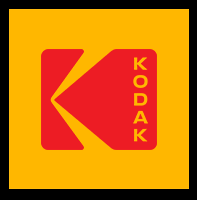
NOTE: THIS IS FOR THE PROCESS OF OLD EXPIRED OUTDATED MOVIE FILM LONG PAST IT’S EXPIRY DATE
WE DO NOT PROCESS ANY NEW FILM STOCK SUCH AS KODAK VISION3 OR E-6
If you have other films that have been processed and require scanning (transfer) and have any quantity of unprocessed outdated movie film you would want processed (developed) we may be able to provide discounts on processing and scanning depending on your quantity.
TO REQUEST PRICING OR A QUOTE FOR FILM PROCESSING (DEVELOPING), YOU MUST EMAIL OUR LAB. Pricing and estimates for film processing & scanning are NOT provided by phone.
Preparations for your quote by email: Provide your name, location, phone number, type of film you have, length/size of each, your quantity (how many rolls, magazines, cartridges you have), a photo or photos if possible and if you have other films that are already processed and you may want transferred. Discounts apply for processing if you have other films that have already been processed and require transfer.
PROCESSING IS PROVIDED IN CYCLES THROUGHOUT THE YEAR: THE NEXT FILM DEVELOPING (PROCESSING) CUTOFF DATE AND CYCLE START DATES ARE PROVIDED BY EMAIL.
OLD MOVIE FILM PROCESSING – Long past it’s expired developing date
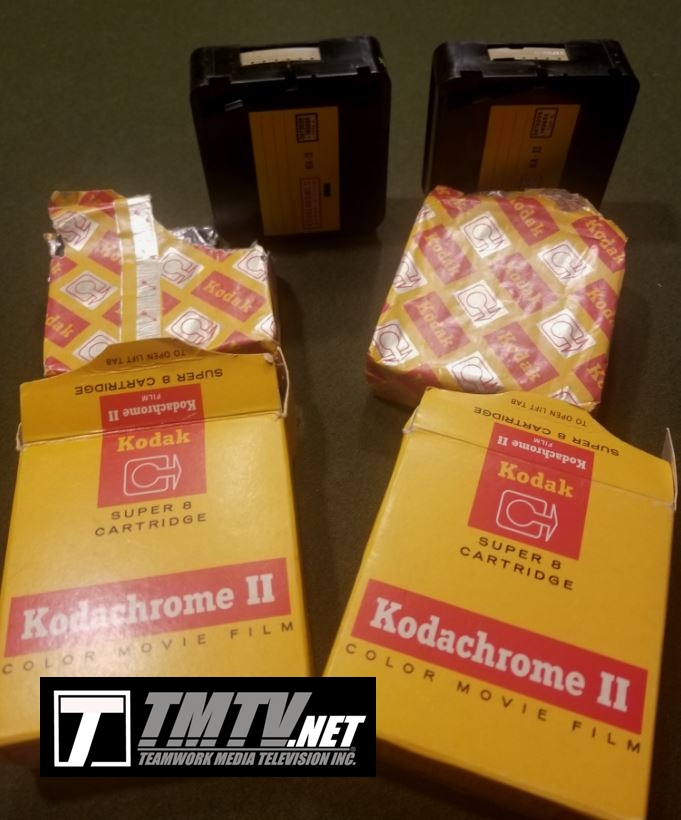
HANDLING UNEXPOSED (UNDEVELOPED) MOVIE FILM: Developing all types of old 8mm & 16mm film that was not processed. If you expect you have movie film that was not processed, DO NOT REMOVE FROM IT’S ORIGINAL CAN OR CARTRIDGE – DO NOT EXPOSE THE FILM TO BRIGHT LIGHT
What to consider before sending your films to be processed.
1) If you have other films that have been processed and require scanning (transfer) we may be able to wave the cost of developing or at least provide a substantial discount depending on your quantity of already processed film. If you have other films to transfer then consider including those with your undeveloped films for us to provide an estimate by email based on your quantity.
2) There are minimum costs associated with processing (developing) old outdated motion picture film whether any images or not.3) Age-related deterioration, poor storage conditions, environmental damage (e.g. contact with moisture, extreme heat).
4) Exposure problem (e.g. not exposed at all, glossy under/over exposed), camera malfunction, improper handling, incorrect original camera settings.
5) A combination of the above factors.
Once processed, your films will be carefully inspected but there are no guarantees of any discernible images.
Inspecting your film:
Film in a can: Double 8mm, regular 8mm & 16mm

If the film is in a can and is sealed by black or white (cloth type) tape, do NOT remove the tape or open the can. If the tape has a label or seal over the tape it is more than likely a new unexposed reel.
If you suspect the can has been opened or the black/white tape has been removed and replaced or there is no black tape sealing the film can, then the film was probably exposed. If you think the film has been removed from the can, unwound or removed from the reel and exposed to bright light, then film may be no good and it would be up to you if you think it is worth the cost to develop the film to see if there are any images.
Film in a black plastic cartridge: Super 8mm
This would be Super 8mm film either Ektachrome, Kodachrome or B&W reversal sound or silent film.
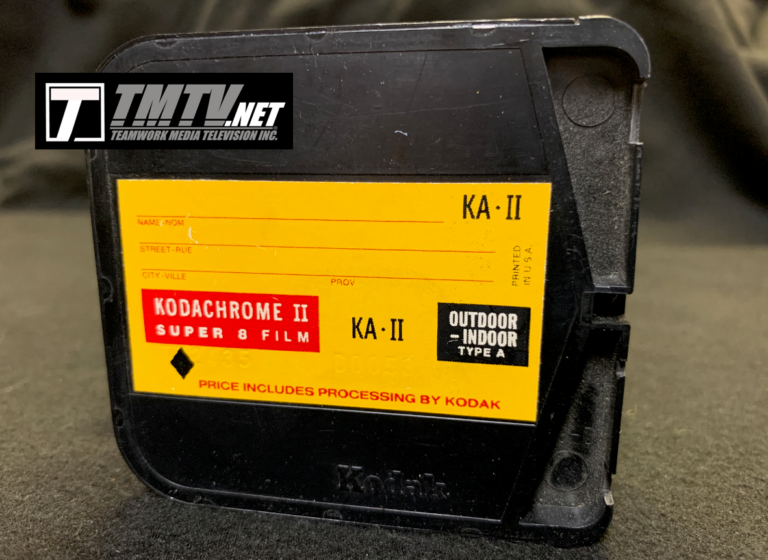
You would see a portion of the film (brown film with sprocket holes… if it says “exposed” then the film is at the end of the roll and has been exposed and ready for processing.

If it does not say “exposed” it was either removed from the Super 8 camera before it was finished or it is a new roll and not exposed, however new rolls are usually in their original sealed package in an unopened box. If there is no brown film showing, it could have broke will shooting or come off the end of the spool, which in that case means it has run to the end and been exposed and ready for processing.
Film in a black magazine:

Eastman Kodak Daylight reusable metal double 8mm film magazine
Usually 16mm but their was 8mm cameras that used this format. 8mm & 16mm magazine with the Kodachrome Daylight white seal tape, meaning the film has not been opened and ready for processing (developing). DO NOT REMOVE OR ATTEMPT TO OPEN THE MAGAZINE.
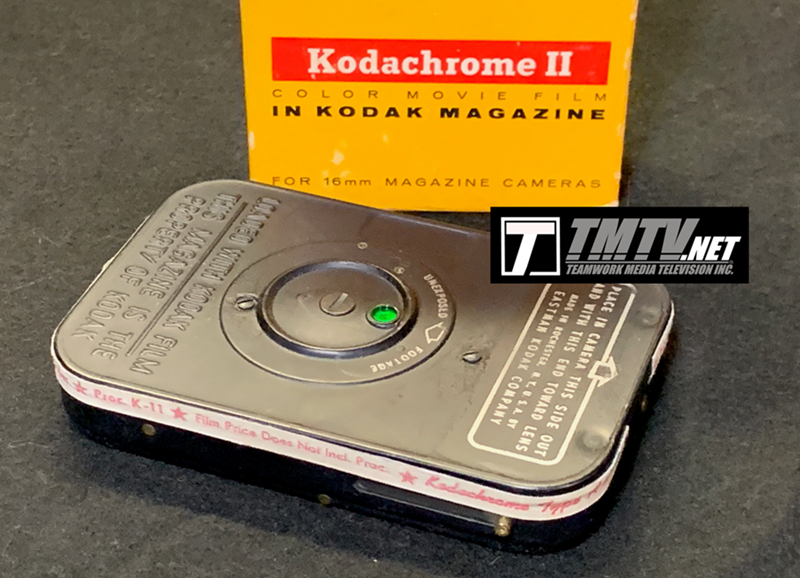
Old Super 8mm, 8mm & 16mm film developing: All film sent to us for developing must be paid in advance of processing. Cost will include the cost of developing, placing the film on new film reels. Scanning (transfer) to Standard or High Definition is included when only getting one (1) film processed. Scanning (transfer) for two (2) or more films will be additional charge (if images). The film is output to your choice of film file types including .MOV in SD, HD HD 2K or Numbered Image Sequence (photos of each frame of film). Options to create DVD or Blu Ray Archival Masters is also available at additional cost.
Processing time: Motion picture film is processed throughout the year on scheduled cycles. Contact us for the next schedule deadline. Turnaround is approximately 12 to 14 weeks from the cycle start date, plus shipping times. No rush orders are available.
The lab is able to process all types of old expired small format (16mm, Regular/double 8mm & Super 8mm) sound or silent motion picture film. The brand and age of film, correct exposure and proper storage conditions will all affect the outcome of the film.
Kodachrome and Ektachrome films were manufactured pre-1984 and are years beyond the process before date on the original packaging.
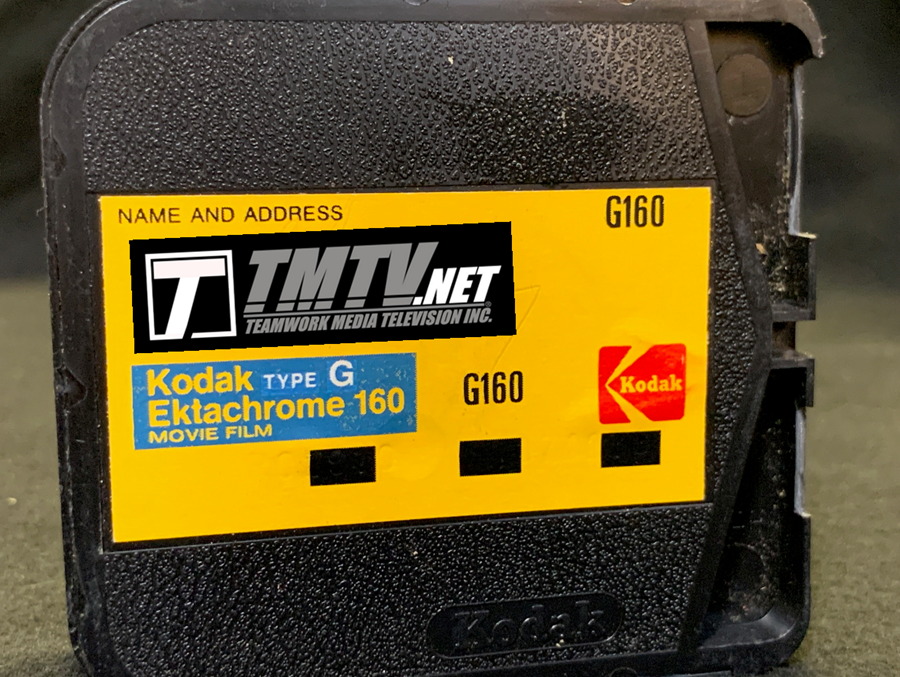
1. Kodak Ektachrome, Agfa Moviechrome or similar “dye” incorporated color films.
With these films the dye is part of the film emulsion and it is still possible to process these films into color images. Though success with this type of film is generally 90% – 95%, they are likely to turn out faded and color shifted from age. To process Ektachrome in color rather then B&W is an additional charge. If you are confident that your film has been stored consistently in cool temperatures and/or color is extremely important to you, specify that you would like color processing. If you are unsure of the storage conditions, the black & white negative process offered is the safer approach to salvaging something from your film.
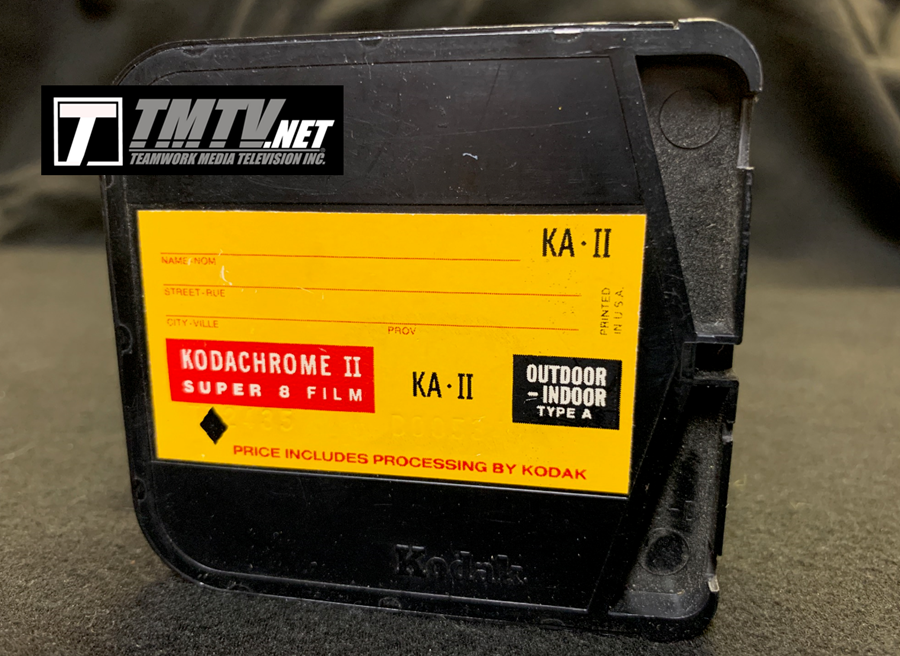
2. Kodak Kodachrome, Agfachrome, Anscochrome, Fujichrome or similar “non-dye” incorporated color films.
With this type of old film, the color dye is not part of the film emulsion and it is no longer possible to have it processed into color images because the required chemistry is no longer available. This film must be processed into a B&W negative and then scanned (transferred) with a high-output LED light scanner to video files so that you can view the image in positive. For Super 8 format, the overall success rate is around 80%; for regular 8 (which is most often older film) the success rate is around 40%. The image quality ranges from fairly good for Super 8 to extremely poor for Regular or double 8. If we are able to make out clear or fairly clear discernible images on your film, regardless of quantity, it will be transferred and the usual price will be charged. If images are very poor and not discernable it will not be scanned and there will be no additional charges.
B&W film
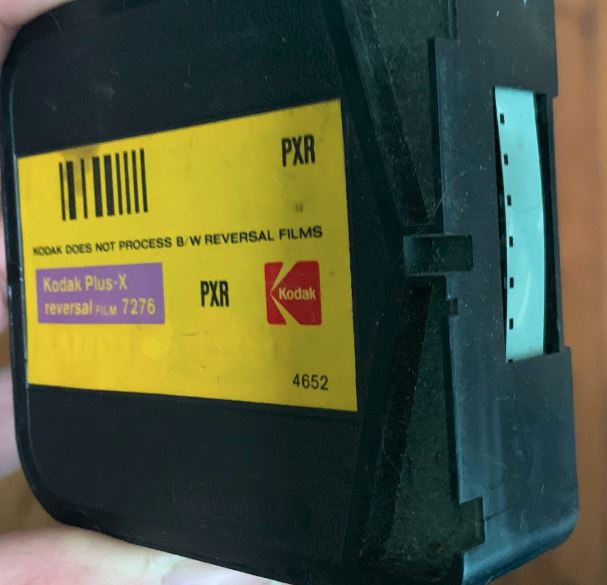
Most small format B&W motion picture film that we receive in for processing was intended to be processed into a positive image. If your film is less than 15 years old or so, we recommend you find a motion picture lab that is able to process your film into a positive image. If it is older than this, we recommend that it be processed into a B&W negative.
Once your film is processed…
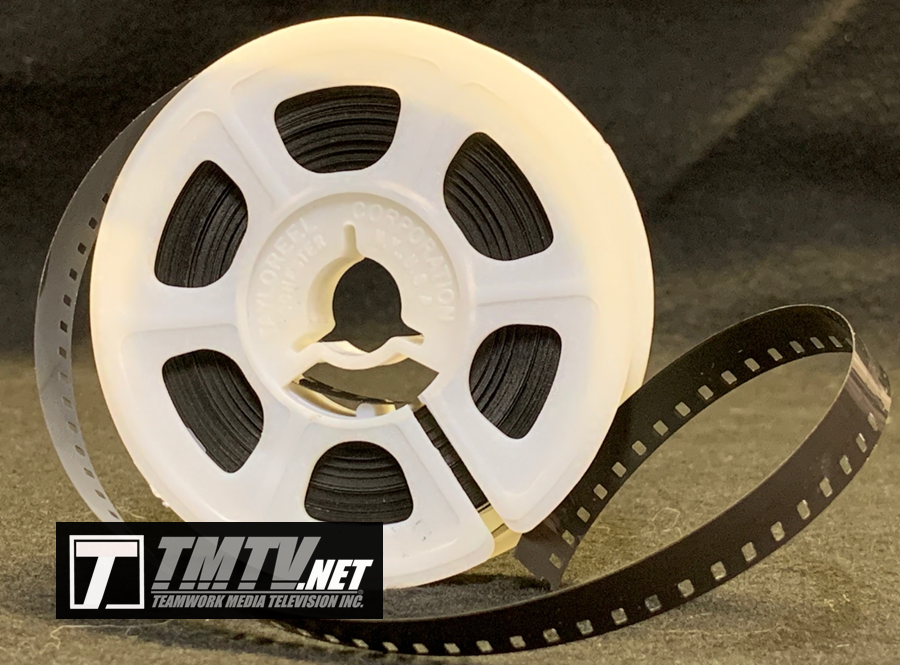
Your films will be carefully inspected after processing but if there are no discernable images… The reason may be:
1. fogging (e.g. age-related deterioration, poor storage conditions, camera malfunction, improper handling)
2. exposure problem (e.g. not exposed at all, glossy underexposed)
3. environmental damage (e.g. contact with moisture, extreme heat)
4. a combination of the above factors
If images…your motion picture film is then scanned (transferred) at our lab by our specially designed film scanners with high-output LED motion picture scanner with grain reduction and image enhancements as required. Your film can be output to a number of choices that can include Standard Definition (SD), High Definition (HD), HD 2K in various file formats such as .MOV, Numbered Image Sequence or AVI files for computer editing. 4K, 5K and 6.5K options available. Post options are available to create a completed movie in a file format or on a DVD or Blu Ray master.
FURTHER DETAILS
We only develop (process) “old expired” movie film long past it’s expiry date. Kodachrome type film can only be processed into black and white, there is the ability to run Ektachrome color films in color processes. However, this often is highly inadvisable as you risk losing any kind of image at all or having a much lower quality image than you would in high contrast B&W negative, which we then convert to positive during the film to digital scanning (transfer) process.
WE DO NOT PROCESS ANY NEW FILM STOCK OR KODAK VISION3 COLOR NEGATIVE FILMS REQUIRING ECN-2 CHEMISTRY. These include; 50D/7203, 500T/7219, 250D/5207/E-6 S8 OR 16MM FILM.
WHAT WE WILL TRANSFER: The policy is to transfer a film deemed to have a fairly good discernible image on some part or all parts of the film. The final transferred image quality must be fair to good, if we can’t make out the images then it will not be transferred; the Technicians err on the side of providing the customer with all possible decent salvaged image. If there is an image detected on your film and not discernable (make out people, faces, landmarks, signs) it will not be transferred. After our processing and careful inspection we would inform you of the quality.
FILM IS RETURNED WITH YOUR ORDER ON REQUEST: The film can be returned if you require. The film will be in either B&W or color “negative” depending on the type of film and the option you requested. It would not be viewable in a projector in a positive image.
DAMAGED MOVIE FILM? WE ALSO SPECIALIZE IN: FILM RECOVERY AND RESTORATION WARPED, SHRUNK, BUCKLED, TWISTED, BRITTLE, MOLDY, VINEGAR SYNDROME, SPIDER WEBBED, WATER, SMOKE, FIRE DAMAGED, DETERIORATING OR DEGRADING MOTION PICTURE FILM MOVIE FILM – SEE OUR FILM RECOVERY PAGE
Super 8mm 8mm or 16mm roll, spool, core, cassette or magazine
Safest method (B&W negative)
MINIMUM CHARGES FOR PROCESSING TWO OR MORE DOUBLE 8 25 FOOT, FIFTY (50) FOOT SUPER 8MM OR 16MM FILM TO SEE IF THERE ARE IMAGES – Minimum charges are required to the cover cost of chemicals and labour. When there are fair to good detectable images on the film regardless of quantity. Once processed we then perform the FINAL processing and scanning (TRANSFER) with grain reduction and image enhancements as required and output to standard or high definition file format. Additional cost for “sound” film.
Discounts apply on processing two or more films and/or submitting already processed films for transfer with your unprocessed film.
Additional cost if images after processing:
- Cost of storage media (DVD or BLU RAY DISCS or USB THUMB/FLASH OR HARD DRIVE)
- Sound capture and sync (IF SOUND FILM THERE IS AN ADDITIONAL COST PER 50 FEET OF 8MM OR 16MM FILM – TO CREATE WAV SOUND FILE – AND THEN SYNC THE SOUND TO CREATE A COMPLETED FILE WITH BOTH SOUND AND PICTURE.
- Cost of return shipping (DOES NOT INCLUDE FREE RETURN SHIPPING ON ANY SIZE ORDER OF FILM PROCESSING) – Free return shipping MAY apply if submitting other already processed films for transfer if the value is more then $900.00 CND.
- Taxes apply to all Canadian orders (Tax exempt for USA customers).
PAYMENT BY CREDIT CARD OR PAYPAL ONLY: ALL PROCESSING IS PAYABLE IN ADVANCE BASED ON THE NON REFUNDABLE MINIMUM PROCESSING CHARGE- Payment for USA customers is only accepted by Visa, MasterCard, American Express or PayPal. All types of payments accepted for Canadian customers including e-transfer. The amount must be paid before the cycle cut off date. If not, then your film enters the next cycle processing date and delays your order. After processing if there are images there may be additional charges depending on the options required or chosen. The film is not returned if there are no images to scan (transfer), if you really want your film returned even with no images you will have to pay for the return shipment of the films. All Bank of Canada exchange rates are indicative rates only, obtained from averages of aggregated price quotes from financial institutions. The actual US exchange rate will be determined by your Credit Card Company or PayPal account at the time of payment. Your credit card company may charge you an additional conversion fee. We do not guarantee the accuracy of any foreign currency information listed on this estimate. CURRENT CANADA/USA EXCHANGE RATES
FILE/DATA STORAGE INCLUDED: There is a maximum 60 day file storage and backup to all “Mastered file formats” were “files” or “data was created or mastered from the customers original material. After 60 days from the date of invoice the files will be deleted unless we are instructed by you in writing to hold onto the files/data for a longer period. Data storage fees may apply depending on how long the additional storage is required.

Please keep in mind that your film may be decades beyond its process before date and our job is to salvage the film in the best possible way. The Technicians do their best to get good quality images from these very old films but the results are highly variable depending on age and past stored conditions. The quality range may be from good to just barely discernible.
- Kodachrome, Agfachrome, Anscochrome, Fujichrome or similar non-dye incorporated color films — Can only be processed into a black and white negative which is then transferred to a black and white positive. There is no color processing option for this film anywhere on earth.
- Ektachrome process EM-25 — By default this is processed into a black and white negative which is then transferred to black and white positive. Color process is possible, if requested, but there is a surcharge (for each 50’) and the film is less likely to turn out. In color the chance of a recognizable image is about 80%, while black and white is near 90%.
- Ektachrome process EM-26, Agfa Moviechrome or similar dye incorporated color films – By default, this is the only type of vintage movie film that are processing into color. You can request that it be processed into a B&W negative instead of color if you wish to take the safest possible approach to salvaging something from the film. They almost always do turn out at least as recognizable in color but the B&W version of the image can often be better quality. Color processing for this type of film is more expensive then B&W processing.
- All other movie film – By default these are processed into a black and white negative which is then transferred to black and white positive. Color process is possible for Ektachrome only (but not recommended) but can be processed into color if requested, B&W film is of course processed into B&W but this type of film stands up much better over time than color film.
Typical chance of recognizable image on properly exposed and stored film:
| 1940s | 1950s | 1960s | 1970s | 1980s+ |
| REGULAR 8 30% trend: very poor |
REGULAR 8 40% trend: poor |
REGULAR 8 50% trend: poor to fair |
SUPER 8 70% trend: fair to good |
SUPER 8 near 90% trend fair to excellent |
MEDIA OPTIONS FOR YOUR FILE STORAGE:
HARD DRIVES, THUMB/FLASH DRIVES, SD CARDS: Uploading of files to portable drives: Once your film has been scanned we can then store your film project on portable hard drives, Solid State Drive (SSD), thumb/flash drives or SD cards. We use only Superspeed USB 3.0, 3.1, 3.2 media for fast uploading/downloading file transfer. Our supplied Portable Hard Drives & Solid State Drives (SSD) all work with Windows® and Mac®. CLICK HERE FOR A VARIETY PRODUCTS
Please contact us for further details BEFORE shipping your films to be processed so we can provide you special shipping instructions.
